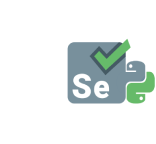Belitsoft web testing company has an experienced QA team with an extensive background in using different testing tools and approaches to deliver error-free web applications and websites. Our dedicated software testing team is available to test your software right now!
Our best practice is reviewing code on a peer-to-peer basis among team members at equal levels. Every team member can give a fresh set of eyes to detect bugs before a code revision round by the tech leads. It is one of our daily, routine activities, and that approach accelerates the software development process.
Dmitry Baraishuk Belitsoft's CTO on Forbes.com

Types of Web Testing we provide
 Functional Web Testing
Functional Web Testing
We verify your web applications/sites operations to ensure they perform precisely as intended and align with your business needs. This process includes in-depth validation of all system functionalities, including data processing, business logic and the accurate execution of all user commands. We rigorously test critical website forms, including registration and order forms, to confirm accurate form field functionality, mandatory field completion, and reliable form submission processes. Our testing guarantees the flawless handling of cookies, including their deletion, when the web cache is cleared.
 Security Web Testing
Security Web Testing
In security testing, we confirm secure pages are accessible only to authorized users and check to ensure that the downloading of restricted files is blocked without proper access and authentication. We also test the reliability and effectiveness of features that automatically terminate sessions after periods of user inactivity to ensure enhanced security. Our services include proper redirection to encrypted SSL pages when SSL certificates are used. And we also implement and validate industry-standard security tests like OWASP Top 10, CWE, CERT, and more. Furthermore, we incorporate and assess code quality standards, such as JSLint within Static Application Security Testing (SAST) and Dynamic Application Security Testing (DAST).
 Performance and Load Web Testing
Performance and Load Web Testing
Checking your website’s performance includes measuring the response times of your web application to set benchmarks and key performance indicators (KPIs) under different network conditions. Our load testing methods determine how your web application executes under normal conditions, such as single-user performance, as well as during peak loads with millions of virtual users. We also conduct stress testing to identify the breakpoint of your web application when pushed beyond normal load, particularly during peak times. Additionally, we focus on assessing your site's ability to recover from crashes or availability issues, ensuring it remains robust and resilient in demanding scenarios.
 Accessibility Web Testing
Accessibility Web Testing
Our service offering in accessibility testing evaluates your web application against common accessibility standards like WCAG, ADA, Section 508, and the ACA for clients in Canada. Additionally, we focus on providing proper accessibility IDs for web elements to make test automation easier.
 Automation Web Testing
Automation Web Testing
We apply automated web testing to improve the team’s productivity and get instant reports and wider coverage of test cases in less time, addressing requirements and features in each cycle. Also, test automation is a cost-effective way to minimize human error and maximize result accuracy. This extensive test coverage helps in preventing avoidable issues from going into production and causing a poor user experience. By integrating automated testing, we ensure your web application or website meets high standards of quality and reliability.
 Manual Web Testing
Manual Web Testing
Belitsoft has qualified manual testers who can detect all bugs in your software on the development stage. They use the latest manual web testing tools and techniques to improve the reliability, functionality, and usability of your product while identifying issues. We also focus on the human aspect of your website's experience. Our team carries out UX and layout testing, conducts localization tests for multiple regions and languages, and ensures compatibility on various screen sizes and resolutions.
Application Testing
We provide all kinds of app testing services. Our quality assurance engineers check its usability, performance, functionality, security. Our team detects any issues before the application is published. As a result, you get an error-free solution with maximum user engagement.

SaaS Web Testing
The market is pressuring SaaS to require frequent releases of new features (days and weeks, not months) and quick bug fixes (hours, not days). Our SaaS QA engineers run automated tests to make sure that updates do not disrupt the service for any tenants. Test cycles are fast, simultaneous, and automated where possible, without waiting until the end of a development cycle. They help you check the reliability of a shared database under high usage and verify that your SLAs are met, including uptime, response time, and security for each tenant and their sensitive data.

Our Web Testing Approach
During each web testing project, we follow a set of processes to ensure our work provides maximum results.
 Project requirements
Project requirements
The team analyzes your requirements to understand the expected results. We typically involve developers in the discussion to get a clear view of the technical task.
 Process planning
Process planning
Once the team understands all requirements, we create a detailed test plan. The list includes all test tools, types, deliverables, deadlines, and stages. Such systematization helps us work more efficiently.
 Test design
Test design
Test design is the process of creating test documentation (test cases). Test cases include creating tests of any possible user actions, description of all testing steps and expected results after completing.
 Environment setup
Environment setup
We prepare the test environment for your website and application. It usually includes servers, hardware, and other tools that imitate real usage. This helps us test your solution in different workloads.
 Test execution
Test execution
Once everything is prepared, the team applies all its skills to test the web solution. This is where we detect issues and provide recommendations to create bug-free websites.
 Test closure
Test closure
After all the processes are complete, we create a general report with estimates, detected issues, and additional data. This document helps your developers fix current and prevent future bugs.
Technologies and tools we use






























Our Qualified Web Testing Team
Belitsoft is a leading web application testing company with an experienced QA team. Our experts have ensured dozens of websites and apps meet all the requirements for maximum usability. Choosing to hire an offshore testing team can save up to 40% on costs, without compromising on meticulousness or delivering a flawless web experience.
With our skilled offshore QA facility and testing team, we deploy advanced tools and methodologies to identify and eliminate bugs, enhancing your web application's functionality and user experience. Our engineers prioritize creating user-friendly and reliable projects, resulting in a trend-setting website that surpasses the competition.

Test lead/manager
Our test managers make sure all QA processes are provided on time. They also manage the team and plan various testing activities to help you get an error-free web app.

Test Engineer
Test engineers create the testing processes for your project and apply automated and manual testing methods to detect bugs and errors. They also focus on preventing future issues and create recommendations for your websites.
Portfolio
Recommended posts
Our Clients' Feedback




















.jpg)
.jpg)
.jpg)
















We have been working for over 10 years and they have become our long-term technology partner. Any software development, programming, or design needs we have had, Belitsoft company has always been able to handle this for us.
Founder from ZensAI (Microsoft)/ formerly Elearningforce